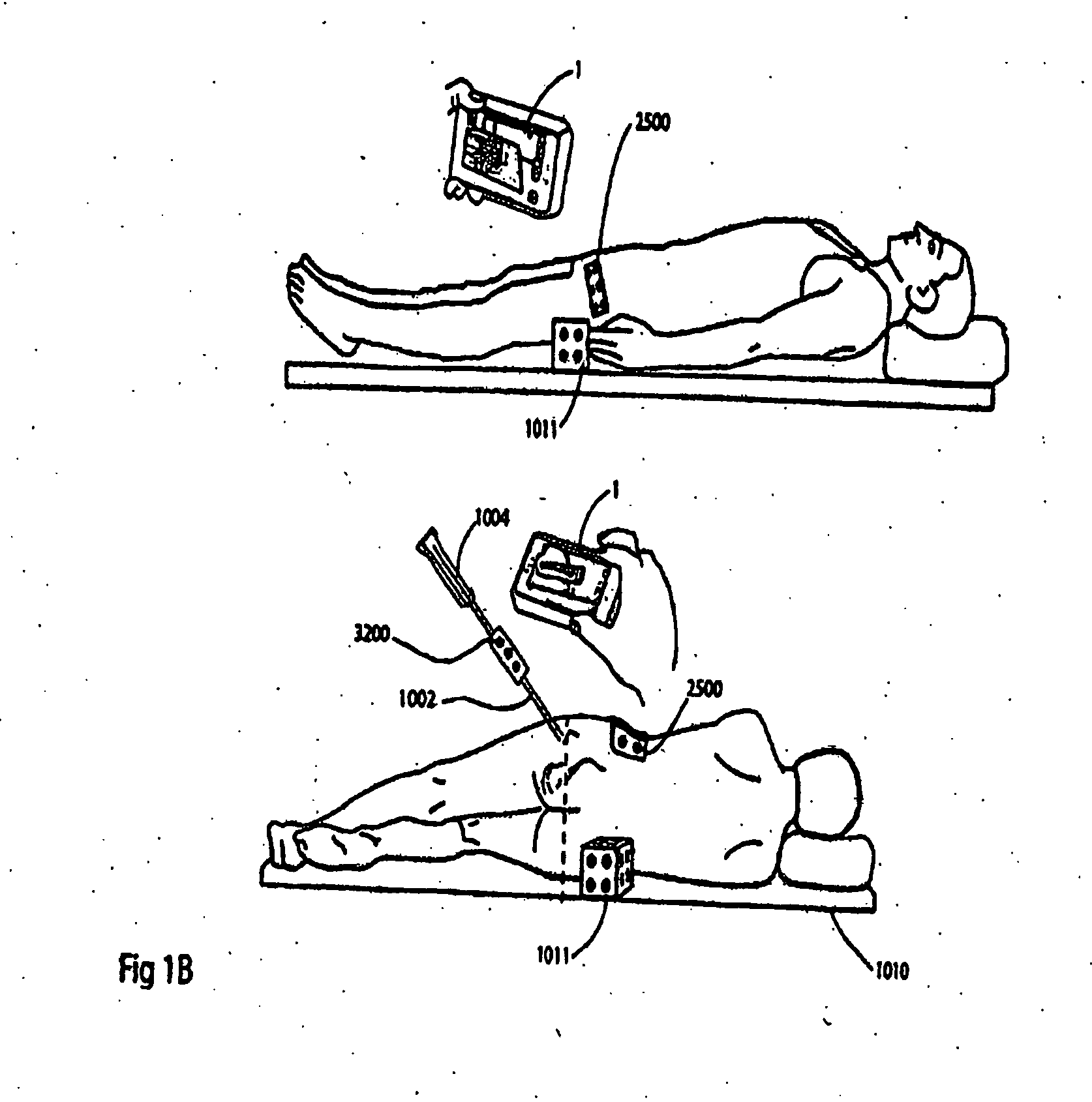Handheld tracking system and devices for aligning implant systems during surgery
- Summary
- Abstract
- Description
- Claims
- Application Information
AI Technical Summary
Benefits of technology
Problems solved by technology
Method used
Image
Examples
examples
[0051]In an exemplary embodiment, the instant invention provides the use of handheld tracking system and devices for hip arthroplasty. Hip arthroplasty is a surgical procedure in which the hip joint is replaced by a prosthetic implant system, which includes a cup placement on the acetabulum (socket) side and step placement on the femur (ball) side. Hip arthroplasty can be performed as a total replacement or a hemi (half) replacement. Such arthroplasty procedure is generally conducted to relieve arthritic pain or to fix severe physical joint damage as part of hip fracture treatment.
[0052]Generally the cup placement procedure is divided into two or three stages depending upon the type of implant used. In case of cemented cup implant, the acetabulum is reamed using a reamer as a first step and then a cup is placed along with cement. While in un-cemented press-fit implant, the acetabulum is reamed and then the cup is press-fitted onto the bone using an impaction tool.
[0053]The hip arthr...
PUM
 Login to View More
Login to View More Abstract
Description
Claims
Application Information
 Login to View More
Login to View More - R&D
- Intellectual Property
- Life Sciences
- Materials
- Tech Scout
- Unparalleled Data Quality
- Higher Quality Content
- 60% Fewer Hallucinations
Browse by: Latest US Patents, China's latest patents, Technical Efficacy Thesaurus, Application Domain, Technology Topic, Popular Technical Reports.
© 2025 PatSnap. All rights reserved.Legal|Privacy policy|Modern Slavery Act Transparency Statement|Sitemap|About US| Contact US: help@patsnap.com



